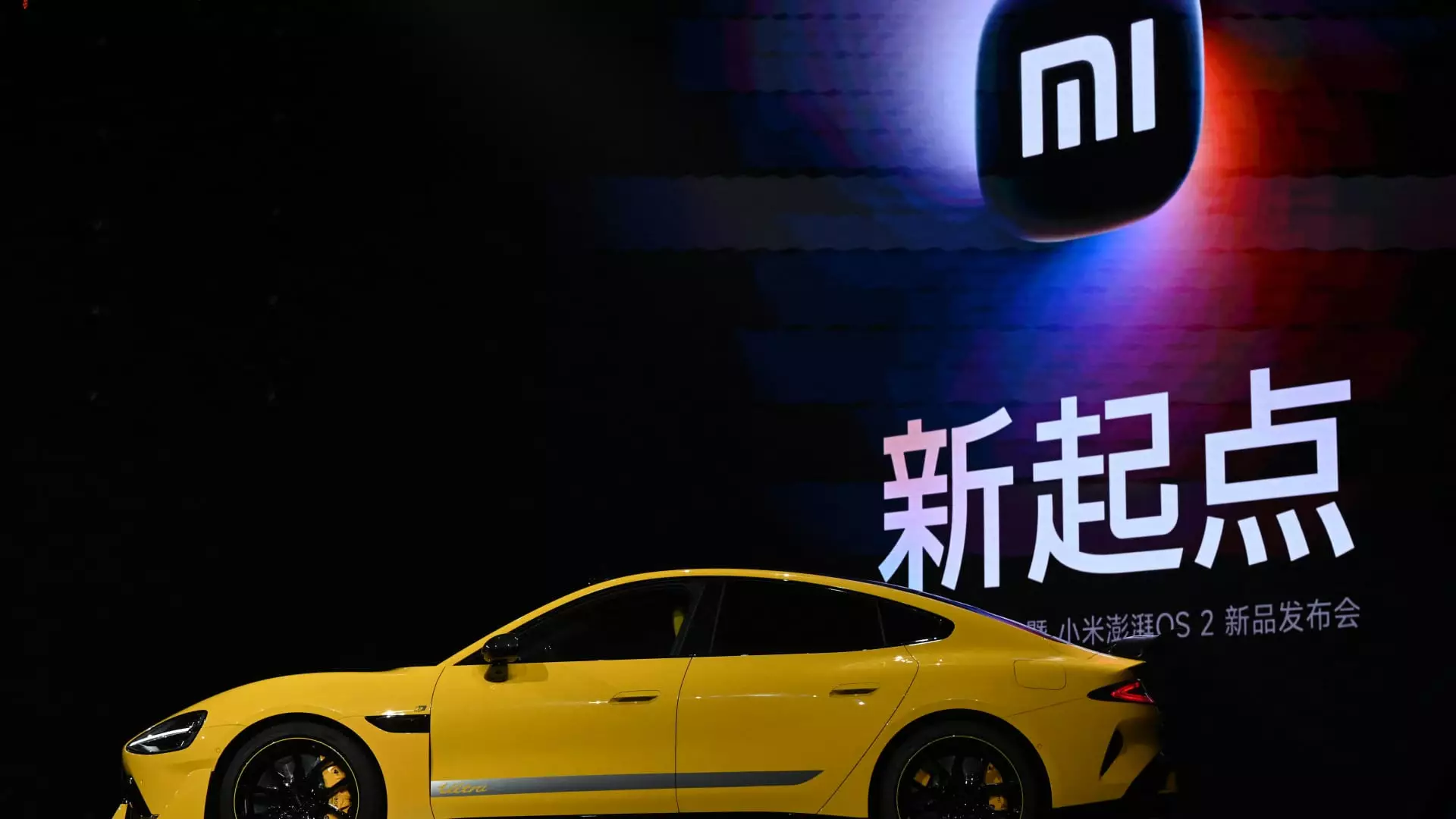The automotive industry is undergoing a seismic shift as traditional players navigate the rapid rise of electric vehicles (EVs). Among the stalwarts making waves is Xiaomi, a brand best known for its smartphones and electronic appliances. The company has successfully transitioned into the electric vehicle market—a journey that began in 2021. Recently, Xiaomi announced delivering over 20,000 units of its SU7 EVs in October, signaling its ambition to claw out a significant presence in an intensely competitive landscape where brands such as Tesla, Nio, and Xpeng are fiercely vying for dominance.
Xiaomi’s Bold Entry into Electric Mobility
Xiaomi’s foray into the EV sector has been marked by aggressive production strategies and clear objectives. The company’s goal to deliver a total of 100,000 SU7 vehicles by the end of November illustrates its commitment to making a serious impact within a short time frame. The SU7 was first revealed as Xiaomi’s inaugural electric vehicle, hitting the market at a price point attractive enough to compete directly with Tesla’s Model 3. This strategic pricing reflected Xiaomi’s intent to capture a substantial market share and engage consumers who might otherwise opt for established EV brands.
Historically, established EV manufacturers like Tesla and Chinese peers Xpeng and Nio took years to reach production milestones that Xiaomi is now approaching in less than half the time. Such rapid growth could indicate a recalibration within the EV sector, where newcomers can disrupt even the most entrenched players. Xiaomi’s impressive sales figures, including delivering more than 75,000 SU7s to date, exemplify the brand’s swift progress and robust acceptance among consumers.
The Competitive Advantage of Pricing and Features
One significant competitive advantage for Xiaomi lies in its pricing strategy. The base model of the SU7 was introduced at a price approximately $4,000 lower than that of Tesla’s Model 3, a bold move that has not gone unnoticed by analysts. Furthermore, Tesla’s response, which included cutting its own prices shortly after Xiaomi’s introduction, underscores the challenge Xiaomi poses in the market. The combination of a lower entry price and rapidly improving gross profit margins allows Xiaomi not just to compete but also thrive as it scales its operations.
Additionally, Xiaomi has recognized the importance of diversification within its EV lineup. Recently announcing the SU7 Ultra—a higher-end iteration of the SU7—the company has already garnered over 3,600 preorders within a mere 10 minutes of taking orders. This enthusiastic response is particularly noteworthy considering each preorder carries a substantial deposit, reflecting strong consumer confidence in the new model and its anticipated features.
Not just a flash in the pan, Xiaomi’s ambitions extend beyond the SU7 series. The automotive industry analyst Brian Tycangco has noted that Xiaomi’s gross profit margins in their electric vehicle division have shown similar potential as Xpeng’s, demonstrating that Xiaomi is on a path of healthy growth as they ramp up production. This projected trend is promising, particularly as they expand their product offerings and venture into the premium EV market.
Looking ahead, analysts are projecting Xiaomi will deliver an impressive 250,000 vehicles next year, a significant increase from previously forecasted figures. This boost is bolstered by the recent prototype of the SU7 Ultra accomplishing milestones at the Nurburgring race track, a marketing accomplishment that not only enhances the vehicle’s credibility but also attracts performance-oriented consumers.
Xiaomi’s rise exemplifies the evolving landscape of the electric vehicle market, underscored by rapidly shifting consumer preferences and market dynamics. For instance, Tesla’s Model Y continues to dominate in China, while Xiaomi’s SU7 notably ranked 17th among best-selling EVs last month with more than 13,500 units sold. Despite these rankings, Xiaomi shows promise with the potential to improve its standing as it broadens its horizons.
Moreover, the company faces challenges concerning its international strategy. While currently focused solely on China, plans for overseas expansion remain uncertain, suggesting that Xiaomi may need to carefully navigate regulatory landscapes and competitive reactions abroad. For now, its strong foothold in the domestic market is a sound strategy for building brand equity before embarking on international initiatives.
Xiaomi’s swift ascent in the electric vehicle segment signals not only its ambition but also hints at a larger industry transformation where innovative, cost-effective solutions can reshape consumer expectations and market dynamics.

